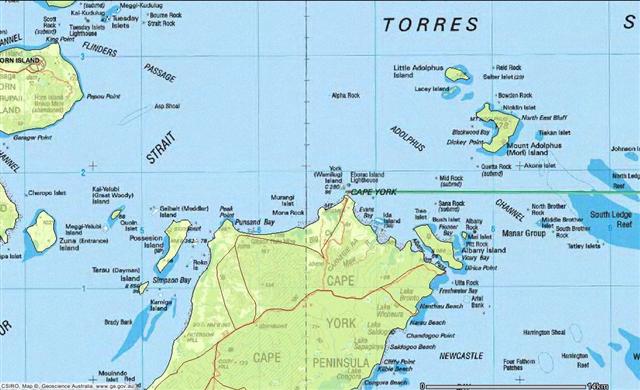
Welcome, from sunny Australia!

 |
The most easterly
point on the mainland is Byron Bay, New South Wales. It's a beautiful area of Australia, frequented by backpackers and tourists - And the occasional tall person with too much time on his hands. |
 |
"Wilsons Promontory
is the most southerly point, and it's pretty rocky so it may be hard to
go as far south as I'd like. Getting there isn't too hard, though
there's going to be a fair bit of walking for the last few kilometres." That's what I wrote when I made this page, and it really did look that easy at that point. Little did I know that 'the last few kilometres' would be more like a marathon! I travelled with a good friend of mine, Dave, starting from his place which as a couple of hundred kilometres away on the Mornington Peninsula. We figured it'd take about two and a half hours to drive to the Promontory, then about six hours to walk the 30 kilometres from the car park there to the southern tip - South Point - and back, so a total of maybe twelve hours or so. Well, we got a little lost on the way down and it took closer to four hours, then the walk over the rough terrain simply took a lot longer that what we thought. A grand total of walking for about thirteen hours! The reason for that is the first and last eleven kilometres wasn't too bad, mostly a vehicle track but quite hilly. The four kilometres odd to & from South Point, however, was just a ratty old overgrown walking track over very rough terrain. I thought I could do that distance over that terrain because I am reasobably fit .... and I was wrong. Dave and I got to the tip and I really wasn't sure if I could make it back to the car park or not. But I was very determined and so we just kept on plugging away bit by bit until it was done. We got back to where the park bus had dropped us off (we couldn't park the car where the track started) at about 11pm, but since the last bus left over four hours before that we had to walk an additional three kilometres to get to the car park where we left Dave's car. That took nearly another two hours because I was pretty much The Walking Dead, shambling along. It got to the point where I decided that I'd better not sit-down anymore to have a break, as I didn't think I could get up again. |
 |
"The tip of Cape
York in Far North Queensland is the most northerly point. This again is
hard to reach, as the roads up to Cairns and a bit beyond are good,
but are rough dirt after that. So it's again 4WD territory, and once I
get there the main danger is crocodiles in the water, so I have to be
quick. My Dad and I have a trip planned to get there in our Pajero 4WD in mid-June, 2006. We'll be putting the 4WD and ourselves on the train from Brisbane to Cairns, then driving the rest of the way up & back." That's what I wrote months ago, and much to my surprise it all went pretty much to plan .... for a change! We got the Pajero onto the train from Brisbane to Cairns no problems, then drove it about 900km on dirt roads up to the tip of Cape York then back again to Cairns. Then nearly another week getting back to home. The main casualty was my favourite hat, which got blown off into the crocodile-infested waters. So here's the brief rundown on how we did it .... (and here's the full story, every day of the twelve days we were away, including many more photos) |
 |
Steep Point in Shark Bay in
Western Australia is the most western point. I plan to get there by flying to Perth, then up to Geraldton, then hiring a 4WD and driving the rest of the way. There's just a tall cliff at that point so it may be difficult to go as far west as what I would like. |